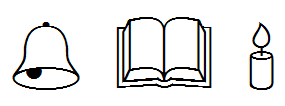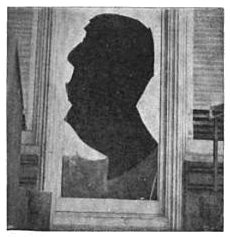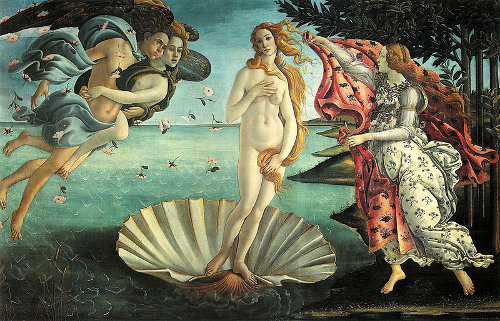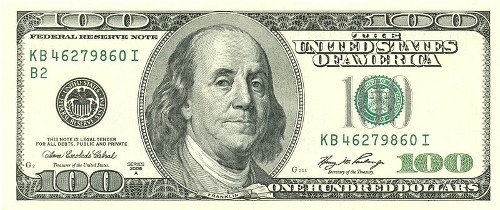
In the Wingdings font, characters 0x25, 0x26, and 0x27 are a bell, a book, and a candle.
(Thanks, Malcolm.)

In the Wingdings font, characters 0x25, 0x26, and 0x27 are a bell, a book, and a candle.
(Thanks, Malcolm.)

I beg to send you the enclosed photo, as a contribution to your ‘Curiosity’ pages. A brother of mine tried to step through a long window, thinking it was open. He found it was closed, but succeeded in opening part of it, leaving the profile of Sir Wm. Harcourt in the gap. This is just as the glass remained when the noise subsided. — Mr. Arthur R. Mills, 38, Billing Road, Northampton
— Strand, February 1902
https://www.youtube.com/watch?v=4NRR2HpALhM
The town of Viganella in the Italian Alps receives no direct sun for 83 days each year. So in 2006 mayor Pierfranco Midali commissioned a 26-by-16-foot mirror to be placed on a nearby mountainside at 3,600 feet. Tracking the sun with computer-controlled motors, the mirror throws light into the town square for six hours each day.
The illuminated area measures 300 square yards. “I can already see my little old ladies coming out of the church after mass and just standing there, enjoying a bit of sun,” Midali said.

After reading David Shulman’s anagrammed tribute to Washington crossing the Delaware, Janet Hodge composed this sonnet:
Sandro Botticelli’s The Birth of Venus
Love is born. A thin cloud bestirs theft —
such a festive birth not to be droll sin.
No strict habits should live on bereft
of love. Blind, it throbs; truth ceases in
antic trust. Oh, love is blest, for behind
its first bother, viols enchant. Double
fret (blush) scares the volition to bind.
It finds both chaste lovers in trouble.
Loves throes ache, but sit blind in frost.
The love born of bliss dictates in hurt
a nibbled truth, sloven heir of its cost.
Noble itch is hovel burn, tastes of dirt.
The bit done, not favors rise, but chills;
Best avoid, not note, such brief thrills.
Each line is a perfect anagram of the title.
“There is no great invention, from fire to flying, which has not been hailed as an insult to some god.” — J.B.S. Haldane
In describing a large water basin, 2 Chronicles 4:2 reads, “Also he made a molten sea of ten cubits from brim to brim, round in compass, and five cubits the height thereof; and a line of thirty cubits did compass it round about.” A similar verse appears at 1 Kings 7:23.
Critics point out that this implies that π is 3, and in 1983 about 100 professors and students at Emporia State University in Kansas founded an Institute of Pi Research to lobby (wryly) for adopting this new value in place of the awkward 3.14159 …
“To think that God in his infinite wisdom would create something as messy as this is a monstrous thought,” medieval historian Samuel Dicks told the Kansas City Times. “I think we deserve to be taken as seriously as the creationists.”
“If the Bible is right in biology, it’s right in math,” added economic historian Loren Pennington.
But writing in the Mathematical Gazette in 1985, M.D. Stern of Manchester Polytechnic noted (also wryly) that the word translated as line above is transliterated qwh but read qw. Further, the ancient Greeks and Jews used letters to denote numbers, with the letters q, w, and h taking the numerical values 100, 6, and 5.
“Thus the word translated line in its written form has numerical value 111 whereas as read the value is 106. If we take the ratio of these numbers as a correcting factor for the apparent value of π as 3 and calculate 3 × (111/106), we obtain 3.141509 to 7 significant figures. This differs from the true value of π by less than 10-4 which is remarkable. In view of this, it might be suggested that this peculiar spelling is of more significance than a cursory reading might have suggested.”
Remove any nine cards from an ordinary deck, shuffle them, and deal them face down into three piles. Choose any pile and note its bottom card. Then assemble the three piles into one, being sure to place the chosen pile on top.
Suppose the card you chose is the three of spades. Spell T-H-R-E-E, dealing one card face down onto the table with each letter. Place the remaining cards on top of these five and take up the whole packet. Now spell O-F, and again place the remaining cards on top of these two. Then spell S-P-A-D-E-S and place the remaining cards on top.
Now pick up the packet and spell M-A-G-I-C, dealing the final card face up. It’s the three of spades.
Remarkably, this trick will produce any card, from the 10-letter ace of clubs to the 15-letter queen of diamonds. It was invented by California magician Jim Steinmeyer and appears in his 2002 book Impuzzibilities (used by permission).

Benjamin Franklin once wrote, “I have sometimes almost wished it had been my destiny to have been born two or three centuries hence.” In one ingenious way he managed to touch the 20th century directly.
In 1785, French mathematician Charles-Joseph Mathon de la Cour wrote a parody of Poor Richard’s Almanac in which the idealistic main character deposits a small amount of money to collect interest over several centuries, enabling him to fund valuable projects after his death. Franklin, who was 79 years old, thanked him for the idea and bequeathed £1,000 each to the cities of Boston and Philadelphia, stipulating that it gather interest for 200 years. When it came due in 1990, the Philadelphia fund had accumulated $2 million, which the city spent on scholarships for local high school students. The Boston trust amassed nearly $5 million, which went to establish the Benjamin Franklin Institute of Technology.
“What astonished me in reading his will was how much energy, intelligence and vigor came through after 200 years,” lawyer Gerard J. St. John, who oversaw the distribution of the Philadelphia funds, told the Philadelphia Inquirer. “I began to have a greater appreciation for Franklin’s place in history.”
Lewis Carroll on the perils of physics:
Suppose a solid held above the surface of a liquid and partially immersed: a portion of the liquid is displaced, and the level of the liquid rises. But, by this rise of level, a little bit more of the solid is of course immersed, and so there is a new displacement of a second portion of the liquid, and a consequent rise of level. Again, this second rise of level causes a yet further immersion, and by consequence another displacement of liquid and another rise. It is self-evident that this process must continue till the entire solid is immersed, and that the liquid will then begin to immerse whatever holds the solid, which, being connected with it, must for the time be considered a part of it. If you hold a stick, six feet long, with its end in a tumbler of water, and wait long enough, you must eventually be immersed. The question as to the source from which the water is supplied — which belongs to a high branch of mathematics, and is therefore beyond our present scope — does not apply to the sea. Let us therefore take the familiar instance of a man standing at the edge of the sea, at ebb-tide, with a solid in his hand, which he partially immerses: he remains steadfast and unmoved, and we all know that he must be drowned.
“The multitudes who daily perish in this manner to attest a philosophical truth, and whose bodies the unreasoning wave casts sullenly upon our thankless shores, have a truer claim to be called the martyrs of science than a Galileo or a Kepler.”